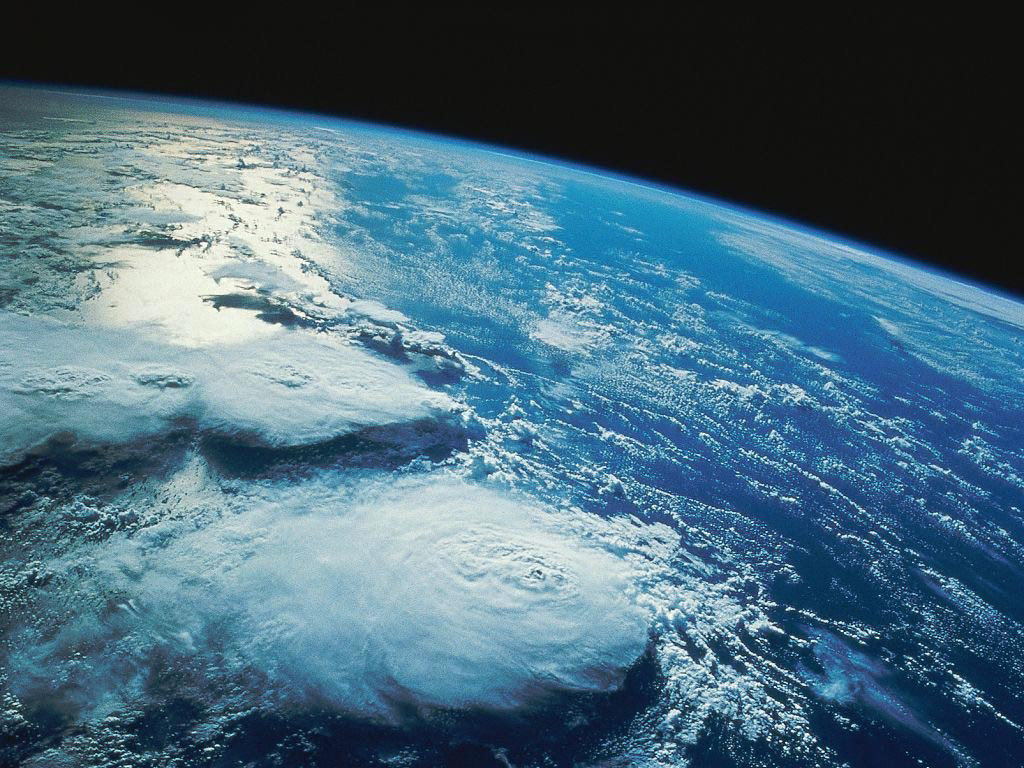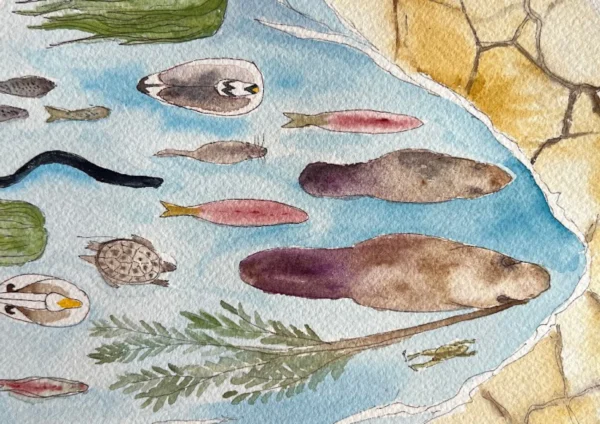
Exposition Météo des forêts
Entre constat des impacts de la crise climatique en cours et possibilité de résilience, l’exposition Météo des forêts propose des…

Crédit image : © NASA
In San Francisco in 1966, a young man named Stewart Brand handed out a button reading « Why haven’t we seen a photograph of the whole Earth yet? » Two years later, the NASA image of the Blue Planet illustrated the cover of the first issue of the Whole Earth Catalog. The image of the Blue Planet emerged as a new universalist icon emblematizing the Whole, it replaced a different image that had dominated during the post-war years: the atomic mushroom cloud. The Whole Earth Catalog featured the image of the Blue Planet on each of its numerous issues. The contents were entirely dedicated to the statement that the photograph seemed to communicate: the whole Earth as one interconnected system. In its structure often seen as an analog precedent of search machines such as Google, Stewart Brand’s Whole Earth Catalog became one of the most influential publications in recent decades, spanning the worlds of cybernetics and hippie culture, nature romanticism and technology worship, psychedelia and computer culture, thus providing decisive impulses not only for the environmentalist movement, but also for the rise of digital network culture.
The exhibition The Whole Earth is an essay composed of cultural-historical materials and artistic positions that address the rise of the image of « One Earth, » and the ecological paradigm associated with it, revealing numerous surprising connections. The visibility of the whole Earth and the use of the image of the Blue Planet in the projects, ideologies, artistic and architectural, musical and political activities of the Californian counterculture proves to be a source of the current constellations. It reveals how the political element of the counterculture came to embrace cybernetic models of regulation that emerged in the post-war period, often in direct proximity to the very military-industrial complex that life reformers, hippies, and the commune movement ostensibly sought to set themselves apart from. But The Whole Earth exhibition does not seek to repeat the old narrative of the sold-out, failed counterculture. Instead, the exhibition intends to describe pivotal ideological and visual figures, points of transfer, conflations and closures in the sign of the « Whole Earth, » beginning with the reversal of the outwardly directed gaze of the Space Age as it turned back onto planet Earth.
The Whole Earth. California and the Disappearance of the Outside is a project in the framework of the « Anthropocene Project 2013/2014 » at Haus der Kulturen der Welt.
With works by Nabil Ahmed, Ant Farm, Eleanor Antin, Martin Beck, Jordan Belson, Ashley Bickerton, Dara Birnbaum, Erik Bulatov, Angela Bulloch, Bruce Conner, Öyvind Fahlström, Robert Frank, Jack Goldstein, Nancy Holt und Robert Smithson, Lawrence Jordan, Silvia Kolbowski, Philipp Lachenmann, David Lamelas, Sharon Lockhart, Piero Manzoni, Raymond Pettibon, Adrian Piper, Robert Rauschenberg, Ira Schneider, Richard Serra, Alex Slade, Jack Smith, Josef Strau, The Center for Land Use Interpretation, The Otolith Group, Suzanne Treister, Andy Warhol, and Bruce Yonemoto, among others.
Curated by Diedrich Diederichsen and Anselm Franke
A production of Haus der Kulturen der Welt
Funded by Hauptstadtkulturfonds (Capital Culture Fund, Berlin) and with the kind support of the Embassy of the United States of America and FDW Display Services.
On occasion of the conference a comprehensive catalogue will be published in June 2013 by Sternberg Press. The illustrated volume includes contributions by Fred Turner, Erich Hörl, Eva Meyer, Mercedes Bunz, John Palmesino, Laurence A. Rickels, Kodwo Eshun, Sabeth Buchmann in German and English, edited by Diedrich Diederichsen and Anselm Franke.
The Whole Earth. Kalifornien und das Verschwinden des Außen / The Whole Earth: California and the Disappearance of the Outside, ISBN: 978-3-943365-76-4 (German), ISBN: 978-3-943365-64-1 (English), in bookstores.
In parallel, the series « Anthropocene Observatory. Documentation, Film, Exhibition » begins in our Studiogalerie: with several newly produced film episodes and archive presentations, the series undertakes fieldwork in the political, institutional, geological, and discursive spaces of the Anthropocene. The first episode, Plan the Planet, will center on a discussion of the Anthropocene in the context of climate change and the institutions and devices that address global warming.
« Anthropocene-Observatory » is a project by Territorial Agency, Armin Linke and Anselm Franke. The first episode, Plan the Planet, will run until August 26.
The second round of the international curators’ network SYNAPSE discusses questions relating to the interface between art and science, alluding to the « Anthropocene Project. » In a five-day, participants’ workshop, eleven up-and-coming international curators will debate questions of curating in the so-called « Age of Man » with a team of renowned curators, artists, scientists and other experts.
SYNAPSE is a biennial project by Kirsten Einfeldt and Daniela Wolf.
The Public Keynote « Anthropocene Aesthetics and the Future of Exhibitions » will be held by Jill Bennett on Friday, April 26, 7pm.
Haus der Kulturen der Welt is supported by the Federal Government Commissioner for Culture and the Media as well as by the Federal Foreign Office.
The Whole Earth. California and the Disappearance
of the Outside
April 26–July 1, 2013
Opening: April 25, 2013, 7pm
Conference
June 21–22, 2013
Haus der Kulturen der Welt, Berlin
John-Foster-Dulles-Allee 10
10557 Berlin, Germany
Entre constat des impacts de la crise climatique en cours et possibilité de résilience, l’exposition Météo des forêts propose des…
Une exposition qui explore les liens entre Deep Listening et écologie, dans le nouvel espace de la Fondation Pernod Ricard,…
Exposition sur le lien environnemental entre la rivière et le castor à l'Artothèque, Espaces d'art contemporain, Caen


